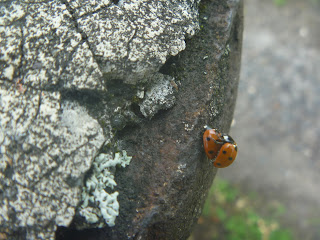On Saturday we had a lovely walk along the John Muir Walkway from Musselburgh to the Bird Hides at the old ash lagoons at Levenhall Links.
Along the way, there's a lovely view across the mouth if the River Esk to the Firth of Forth with Edinburgh and Arthur's Seat in the background
The boating pond was looking pretty
and the wildflower meadows were looking wonderful
We were delighted to see several butterflies and moths in amongst these flowers. We were particularly happy to see this female Common Blue, which despite its name, isn't actually common around Edinburgh, the photo below shows the butterfly's upper wings
and the photo below shows her pretty underwings
We were also very happy to see a couple of Six Spot Burnet Moths
a Painted Lady butterfly, who looked quite tattered
and this handsome hoverfly, which I don't think I've ever seen before, but have identified as
Chrysotoxum bicinctumWe saw plenty of birds too, including these Black Tailed Godwits (thankfully one of them had raised wings, helping us to identify them as Black tailed rather than the, in many ways, very similar Bar Tailed Godwits.
The male Eider ducks are moulting and look very different in this plumage (known as eclipse plumage). In the photo below, the male Eider at the front is in breeding plumage, the rest are males in eclipse plumage.
There are lots of Seven Spot Ladybirds this year, this pair were obviously doing their best to secure the future of the species
Last week I had also visited Dunbar to have lunch with a friend. We enjoyed watching the Kittiwakes at their nesting site at the harbour, these are the prettiest of gulls and are named for their distinctive call, which really does sound like 'kittiwake, kittiwake'
and more Seven Spot Ladybirds, this one just next to one of the reflective cubes at the
Dunbar Battery, which has recently been reimagined as an events venue.
**
Big Butterfly Count takes place this year from 18 July - 10 August. Find out how to get involved here.









































